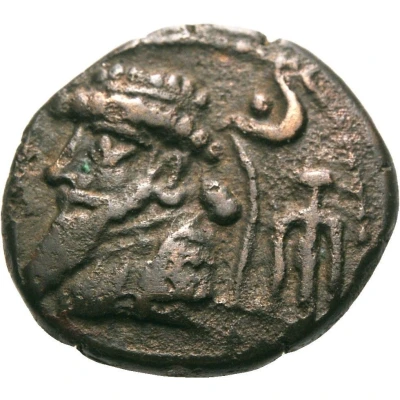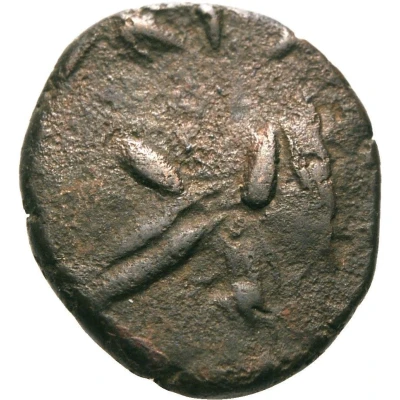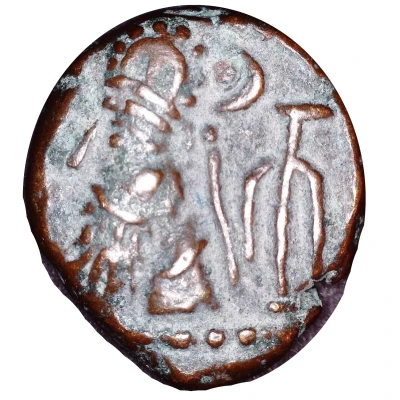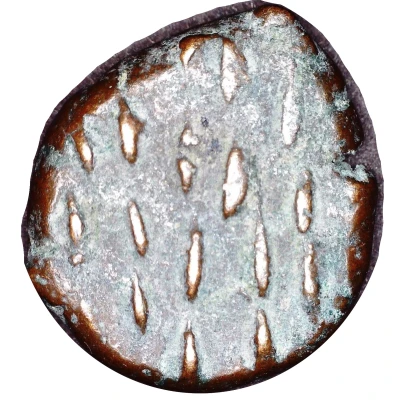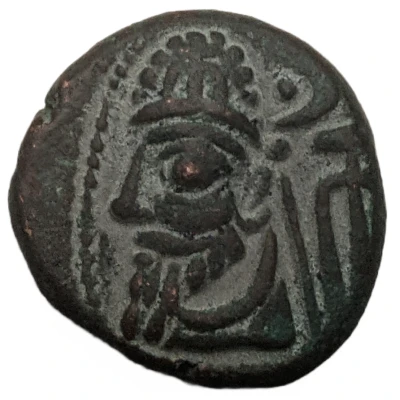
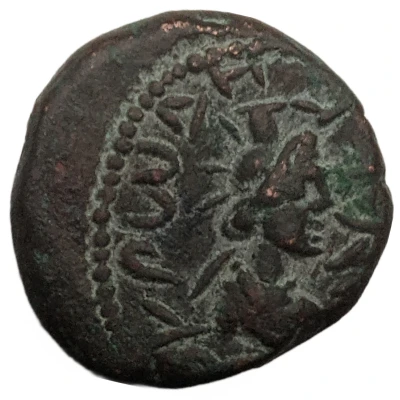

© Collecta Moneta (CC BY-SA)
Drachm - Orodes II - Kingdom of Elymais Arsacid Dynasty
| Billon | 3.16 g | 15 mm |
| Issuer | Elymais (Parthian Empire (247 BC - 224 AD)) |
|---|---|
| Type | Standard circulation coin |
| Years | 50-100 |
| Value | Drachm (1) |
| Currency | Drachm (247 BC-224 AD) |
| Composition | Billon |
| Weight | 3.16 g |
| Diameter | 15 mm |
| Thickness | 3 mm |
| Shape | Round (irregular) |
| Technique | Hammered |
| Orientation | Medal alignment ↑↑ |
| Demonetized | Yes |
| Updated | 2024-10-10 |
| Numista | N#153171 |
|---|---|
| Rarity index | 83% |
Reverse
Bust of Artemis, right, wearing calathus, around her Greek legend, ΥρωΔΗϹ on left reading inside-out, ΒΑϹΙΛΕΥΚ on right reading outside-in. Legend very difficult to read.
Lettering: ΥρωΔΗϹ ΒΑϹΙΛΕΥΚ
Translation: King Orodes
Comment
The coinage left behind by the late Elymais kings are some of the only sources we have about their reigns. They stopped dating the coins around 71-72AD when a new dynasty took over. The new Arsacid family took royal Parthinian names beginning around 76AD with Orodes I, then as follows with Orodes II(Son of Orodes I), and Phaarates(son of Orodes I). Very little is known of the kings of Elymais succeeding Phraates. A coin with the name Orodes, sometimes designated by numismatists as Orodes III, has on its obverse the bust of a woman and the name Ulfan written in Aramaic. This Orodes may be the king of Elamais at Susa identified in an inscription at Palmyra dated 138 C.E. The inscription commemorates the assistance given by a citizen of that city to a Palmyrene embassy to Orodes (Seyrig, pp. 253-55). The lady Ulfan may be identified as the consort of Orodes. Two later kings of Elymais are attested in a series of rock inscriptions written in Aramaic and located at Tang-e Sarvak, a narrow upland valley of eastern Ḵūzestān. The rulers mentioned are (A)Bar-Basi and an Orodes. From evidence contained in these inscriptions, Henning proposes the following sequence of events: Abar-Basi ruled in Elymais. After this king died Bel-Dusa, the high priest of Bel, installed his own son Orodes on the throne. In treating the chronology of these figures, Henning equates Abar-Basi with the king whose bust is depicted on a late Elymaean coin. Henning suggests a date of 150 C.E. for Abar-Basi. The Orodes of the Tang-i Sarvak inscriptions is equated with the king identified in a coin series as Orodes IV. The date of the accession of this Orodes is suggested to be about 165-170 C. E.Interesting fact
One interesting fact about this coin is that it features an image of Orodes II, who was a king of the Parthian Empire, on one side, and an image of a goddess, possibly Artemis, on the other side. This coin was minted during a time when the Parthian Empire was in decline, and the Kingdom of Elymais was a vassal state of the empire. Despite this, the coin still bears the weight and imagery of a powerful empire, showcasing the influence and reach of the Parthian Empire even in its decline.
Price
| Date | Mintage | VG | F | VF | XF | AU | UNC |
|---|---|---|---|---|---|---|---|
| ND (50-100) | - | - | - | - | - | - |
Values in the table are based on evaluations by sales realized on Internet platforms. They serve as an indication only for Drachm - Orodes II - Kingdom of Elymais (Arsacid Dynasty) (50-100) coin.
